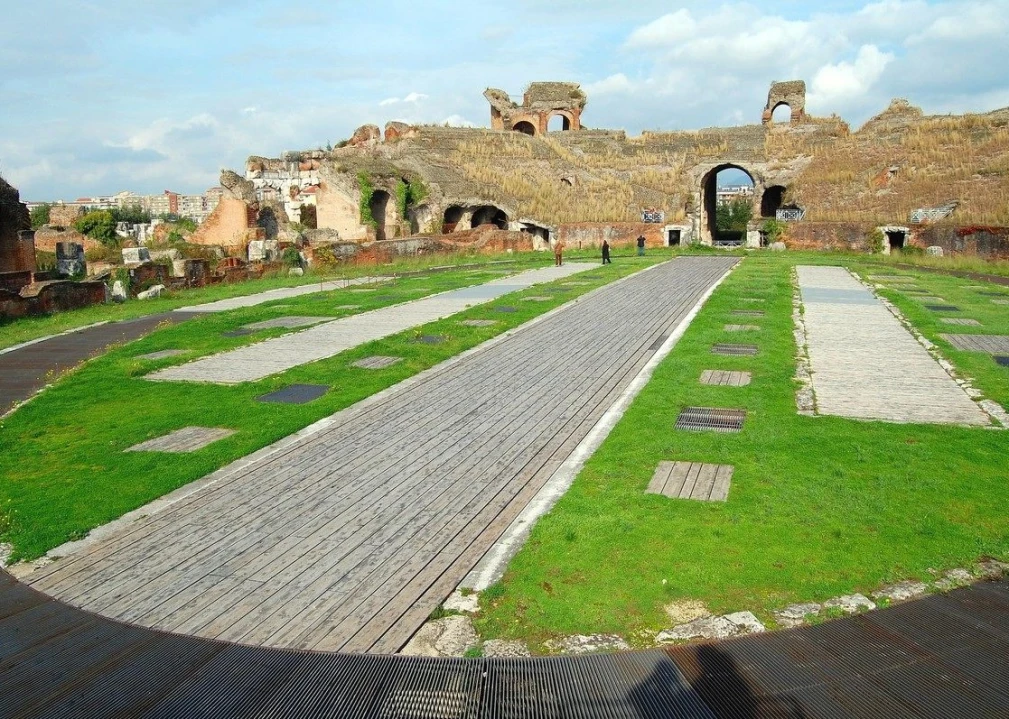With a wide elliptical shape, measuring 170-meter-long major axis and a 139-meter-long minor axis, this is the second biggest amphitheatre ever built by Romans, behind only the Colosseum, which was itself modeled on Anfiteatro Campano. It was divided in four levels, with a total height of 46 meters and it was decorated with numerous statues.
Probably built in the 1st century BC, it was restored many times in the following centuries. After the fall of the Roman Empire, the amphitheatre was damaged by the Vandals and later destroyed, along with most of the city of Capua, by the Saracens. Later the ruins of the amphitheatre were used as a quarry of marble for the construction of the new Duomo and the Lombard Castle, but also many other buildings in the new nearby town established after the destruction of Capua. Only during the 18th century, the amphitheatre was declared a national monument and the depredation stopped.



